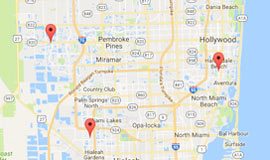When a Bone Spur Feels Like a Dagger
 The most common cause of bone spurs results from the body adding new bone near the site of damage from osteoarthritis. Bone spurs are one of our body’s clumsy ways of showing support. You’re getting older. (Who isn’t?) You have osteoarthritis. You have thinning cartilage, joints that don’t glide smoothly, bones becoming brittle. The body decides to help the situation by making more bone.
The most common cause of bone spurs results from the body adding new bone near the site of damage from osteoarthritis. Bone spurs are one of our body’s clumsy ways of showing support. You’re getting older. (Who isn’t?) You have osteoarthritis. You have thinning cartilage, joints that don’t glide smoothly, bones becoming brittle. The body decides to help the situation by making more bone.
Unfortunately, this well-intentioned effort can backfire. Bone spurs, or osteophytes, are outcroppings of bone that grow where inflammation has damaged the existing bone. In the spine, which is a common site for osteophytes, bone spurs may develop near the facet joints or the vertebrae.
While many people live with bone spurs and never know they have them, they can cause trouble. For patients with a neck injury, bone spurs can be a special curse as they press or pinch a nerve, a phenomenon that makes itself felt as numbness or sharp pain. Bone spurs are a special concern when they trespass into the foramina, which is a small hole through which nerves must pass. This can cause radiating pain, numbness, or weakness because of a pinched nerve.
A Bone Spur Discovery
Bone spurs are usually detected in a happenstance way. Our patients at All-Pro Orthopedics may come to the clinic for another problem— a sore back, for instance; or a hip problem. In the course of a physical exam and imaging tests, we may identify a bone spur. Often enough, when we ask the patient whether they’ve felt any pain in this particular area, the answer is yes. But— maybe because it’s been creeping upon them for a while— they didn’t think to tell us about it.
By themselves, bone spurs wouldn’t be newsworthy. In fact, most of us over the age of 60 have unexplained bumps on the hands or the feet or back. But if they start to interfere with other bodily structures and functions— such as walking or turning the neck— then they can cause trouble.
Fortunately, we have the technology to detect bone spurs, the knowledge to know when they need attention, and ways of treating them.
Conservative Bone Spur Treatments May Ease Pain
 Treatment depends on how much trouble the bony upstart is giving you.
Treatment depends on how much trouble the bony upstart is giving you.
If it’s merely a curiosity— a bump on the spine where none existed before, say— and you don’t feel any symptoms, we just monitor the situation. If you have been experiencing back pain or neck pain, we’ll have a closer look.
By the way, spurs are common in shoulders, too, rubbing on rotator cuffs and causing tendinitis. In the hips, they can reduce the range of motion and make it painful to swing your legs in a full gait. Bony growths in your knee can hamper your ability to extend and bend the knee.
The problem is that the irritation, lack of mobility, and pain of a bone spur-related problem can mimic the signs of other conditions. That’s why it’s important to have a physical exam, x-rays, and other imaging tests if the doctor advises.
Surgery Removes the Bone Spur Root Cause
Nerve compression and irritation caused by a bone spur may respond to anti-inflammatory medications, muscle relaxants, or physical therapy. If these treatments don’t deliver relief, we may consider an injection with a corticosteroid.
A bone spur that interferes with your mobility and your lifestyle is a candidate for surgical removal. Most patients who undergo surgery to remove excess bone on the spine (called a laminectomy) are very pleased with the results. Age is not the primary factor when considering surgery for treating bone spurs, but the general health of the patient— including chronic conditions such as high blood pressure, diabetes, or heart disease— is relevant.











